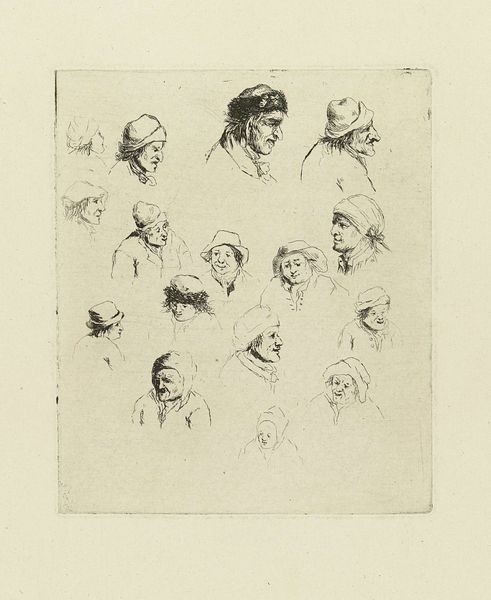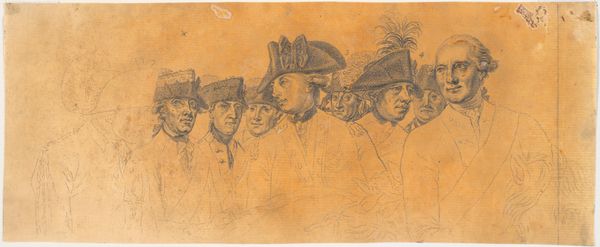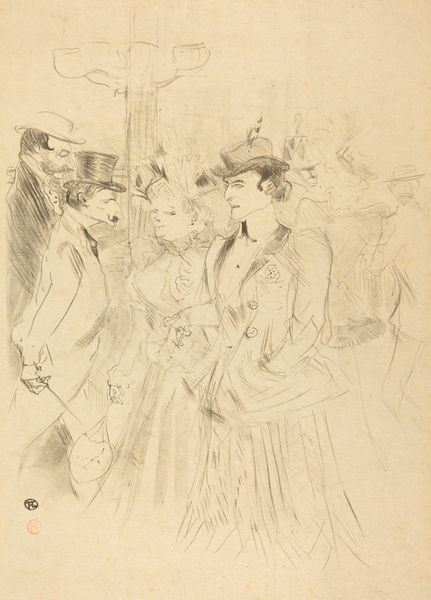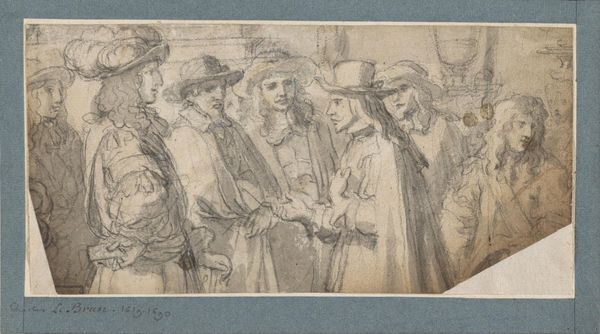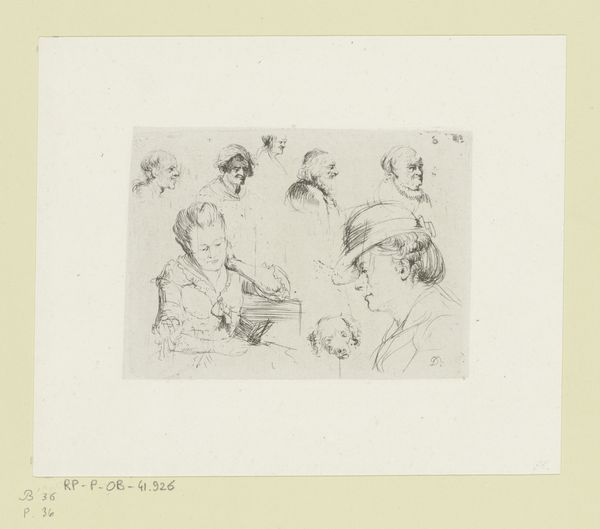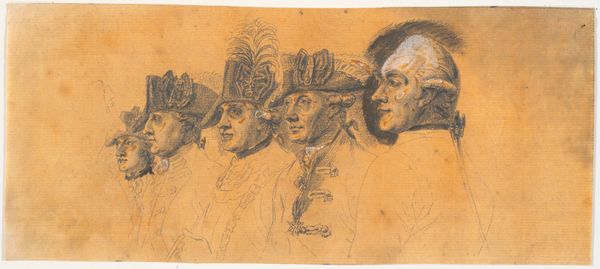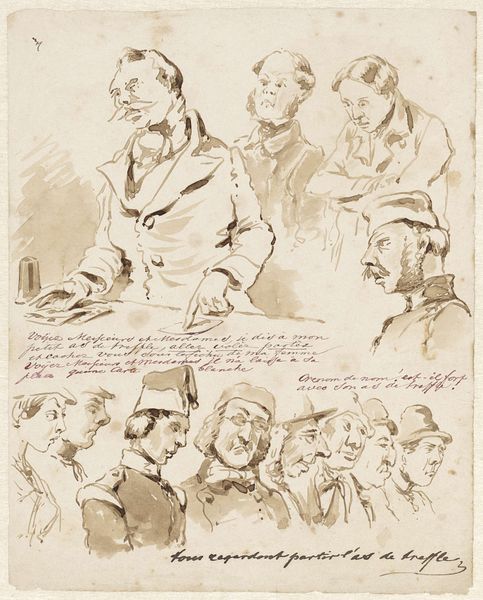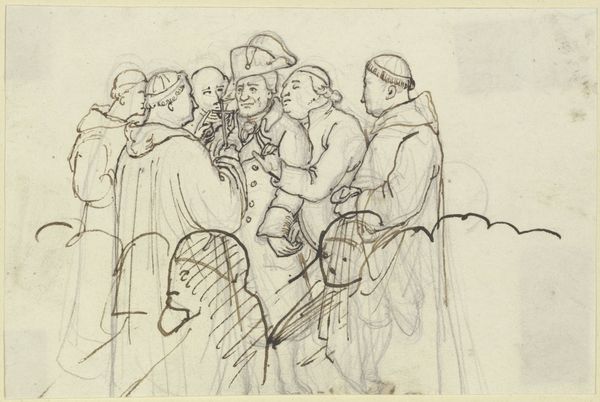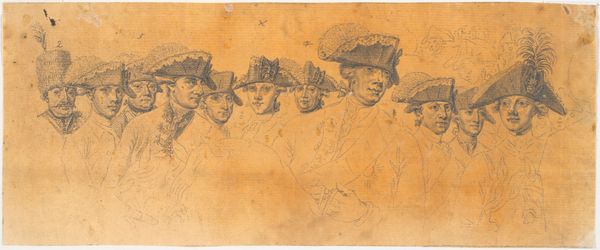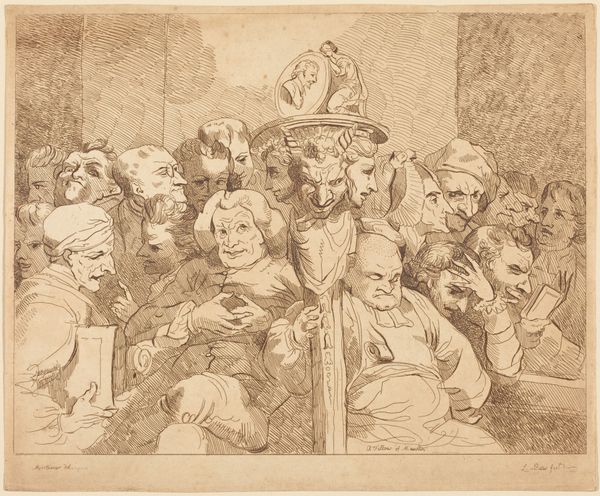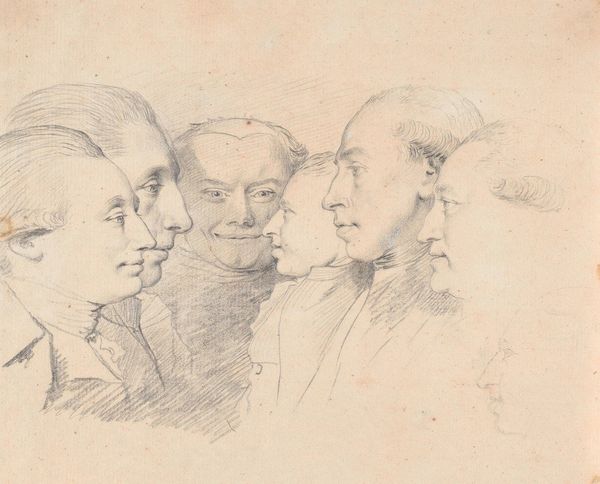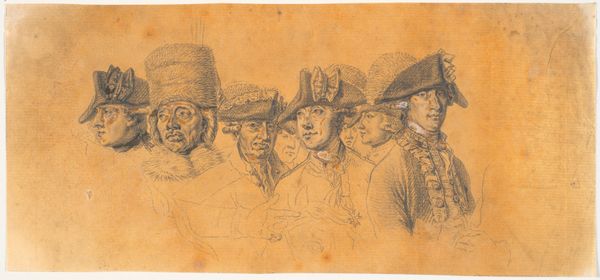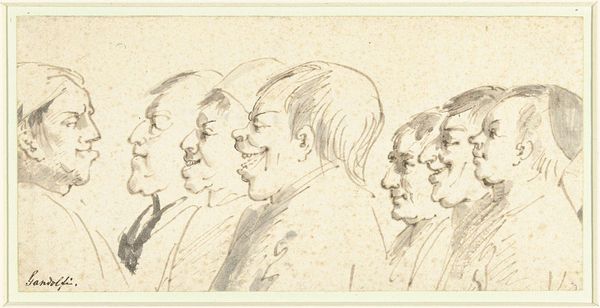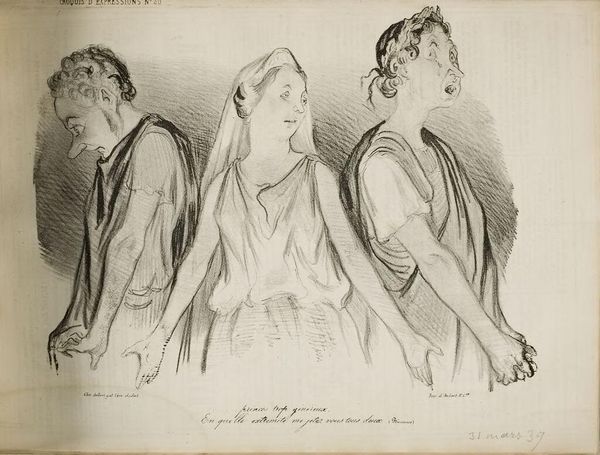
drawing, pen
#
portrait
#
drawing
#
16_19th-century
#
pencil drawing
#
19th century
#
pen
#
portrait drawing
#
academic-art
Copyright: Public Domain: Artvee
Editor: This is “Eight Heads of Ecclesiastics" by Jehan Georges Vibert. It looks like it was made using pen and pencil, a really detailed drawing of what I assume are clergymen. The shading is incredible. What's your take on this drawing? Curator: I am intrigued by the repetitive nature of this work. Look at the materials used: simple pen and pencil. Could this choice speak to the economic realities of artistic production at the time? Were drawings more accessible, perhaps a way to circulate images of power among a wider audience? Consider the labor involved in such detailed rendering, too. Editor: That’s a point I had not considered. I was looking at it more from the religious angle and thinking maybe it was making a statement. Do you not see the Church being relevant to how this work is interpreted? Curator: Not irrelevant, but I want to dig deeper. How did Vibert, through his use of readily available materials, participate in or critique the social structures of his time? The choice of pen and pencil is, I believe, as important as the subjects he depicts. Where were these clergymen, and what material comforts would they have been party to during their life in service? Did the artist intend for there to be a sense of contrast? Editor: So you're suggesting the drawing itself, as a physical object made of specific materials, tells a story about artistic practice and the social landscape, rather than just focusing on the clergymen as the subject? Curator: Precisely. Let's consider how this drawing, reproduced perhaps in prints, might have reached different strata of society. Its materiality and mode of production democratize the image, yet the subject retains its aura of authority. Editor: This has opened up an entirely different avenue for thinking about art. I’ve never thought about it so closely based on materials and its place in commerce! Curator: It challenges us to move beyond just aesthetics and delve into the social life of things, a journey where art becomes deeply connected with human labor and historical consumption.
Comments
No comments
Be the first to comment and join the conversation on the ultimate creative platform.
